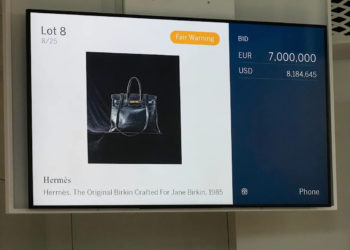Secret Service details changes since Trump assassination attempt
Since the attempted assassination of Donald Trump last year, the Secret Service has streamlined operations, ensured its workforce is up...
Hugh Grant falls asleep at Wimbledon tennis match while seated behind Queen Camilla
Hugh Grant saw an opportunity for a snooze and he took it.While attending the 2025 Wimbledon Championships on Wednesday, the...
Freed from ICE detention, Mahmoud Khalil files $20 million claim against Trump administration
NEW YORK (AP) — On a recent afternoon, Mahmoud Khalil sat in his Manhattan apartment, cradling his 10-week-old son as...
Jane Birkin’s original Hermès bag sells at auction for whopping 8.6 million euros
PARIS (AP) — Sketched out on an air sickness bag, the first Birkin handbag — the prototype for fashion's must-have...
FEMA’s response to Texas flood slowed by Noem’s cost controls
As monstrous floodwaters surged across central Texas late last week, officials at the Federal Emergency Management Agency leapt into action,...
Trump Loves ICE. Its Workforce Has Never Been So Miserable.
The Atlantic Daily, a newsletter that guides you through the biggest stories of the day, helps you discover new ideas,...
Over 2,000 senior staff set to leave NASA under agency push
At least 2,145 senior-ranking NASA employees are set to leave under a push to shed staff, according to documents obtained...
He seeded clouds over Texas. Then came the conspiracy theories.
Augustus Doricko knew when he founded a cloud-seeding start-up in 2023 that he’d have to contend with misunderstandings and conspiracy...
EPA employees sweat through workplace discomfort that some worry may be more than disrepair
For the third week in a row, there have been issues with the air conditioning at the Environmental Protection Agency...
Federal authorities end Idaho search for suspect in kids’ deaths after finding look-alike hiker
BOISE, Idaho (AP) — Federal authorities in Idaho say they have ended a search in the Sawtooth National Forest after...















